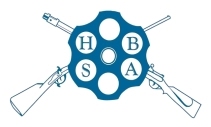A good question for the beginner, so here’s the explanation … At the very beginning, firearms were loaded from the muzzle (the opening at the end of the barrel) by pouring a measure of black gun-powder down the barrel before seating the projectile (usually a lead ball, or bullet) down the barrel of the musket, rifle or pistol, and here’s another explanation. A musket, or pistol, originally was smooth-bored, that is the inside of the barrel was completely smooth. Then, around the fifteenth century, it was discovered that by scoring spiral grooves down the inside of the barrel, this would give spin to the projectile and so increase the firearm’s accuracy. This was to be known as “rifling”. So now you have a variety of firearms, the long smooth-bored musket, the long rifled gun, the rifle and the smooth-bored or rifled pistol. Not to forget the shotgun. This was a long barrelled arm which, instead of one projectile had a number of lead pellets which spread out when the gun was fired. There was one other sort of in-between gun called a carbine, and this was a short barrelled musket, or rifle, originally carried by the mounted cavalry. And for about six hundred years, this was the way you loaded your gun, either with loose powder or a cartridge. What, and why, a cartridge? Well, it was time consuming to have to pour the powder and projectile down the barrel each time you loaded, so someone came up with the bright idea of putting the whole lot together, and they did it like this. You took a piece of cartridge paper, the sort that artists used to draw on, poured your powder on to it, added the projectile (usually still that lead ball) rolled it up to form a self-contained little parcel which you could ram whole down the barrel, and there you have your cartridge – named, obviously, after the name of the paper. Then, with the technological advances of the nineteenth century industrial revolution, it was worked out that you could put the whole lot in a single brass case, the powder, the bullet and the means of igniting the powder. That meant that rather than dropping it down the barrel from the muzzle, you could now create a way of inserting it from the back end of the gun, or breech. This, obviously, had many advantages. You no longer had to stand up to load (especially for a soldier!) and, as time went on, ways would be devised of storing more than one cartridge, or round, as it was also called, to enable the shooter to rapidly reload. There are many scholars and collectors who are interested in the history, and shooting, of those earlier muzzle-loaders, and there are organisations that cater for them. In the same way there are others whose interest lie in exploring the history, development and shooting of breech-loaders – and that’s us! “The Historical Breech-Loading Small-arms Association” |
